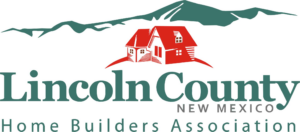(Written by Derrick Childers – NMHBA President – Originally published in the January 2010 Housing Journal)
Some Code Changes Promote “Best Practices”
It is hard to believe 2010 is already here. Many of us will look back on 2009 as not one of our better years. I think the best thing we can do is not look back but to go forward from here. We will do all we can at NMHBA to help make 2010 a better year.
We are continuing to work on the adoption of the 2009 I Codes. More than ever we need to not lose sight of affordable housing. I think economic recovery in the housing market starts with affordable housing. This is the first time since I have been involved in the code change process in New Mexico that “Cost Modeling” (where the cost of a proposed change is compared to the expected benefits) has been done. This is a great new tool to help assure new codes are cost efficient. We will keep working hard to be sure energy code changes for our new codes are cost effective and practical.
As I have been working on the code change committees, I have come to learn of many items in “Green Building” that are cost effective and should be used by all of us as good construction practices. With just a little extra work we all can do our part to help the environment and build more comfortable and energy efficient homes.
The first is to deal with air leakage. Air leakage addressed at the proper stages of construction is easy to do and very cost effective. Spray foam applied around all the penetration in exterior walls and penetrations in top and bottom plates of exterior and interior walls is fast and easy to implement. Using IC-rated recessed lighting cans with seals at drywall, and sealing around all exterior doors and windows with a non-air permeable insulation are also good practices. I have seen the difference these changes make in a blower door test and they make a big difference in improving energy efficiency.
Next we should look more closely at thermal bypass. I knew very little about thermal bypass when I started this code change process and to tell you the truth I was a little intimidated by the idea. But I quickly learned it is not as bad as it might sound. First insulation should fill up the whole wall cavity. If not, drafts are created in the wall cavity and lower the energy efficiency. All tubs against exterior walls should be insulated under them and also have an air barrier installed. Air-permeable insulation installed in walls should be in contact on all six sides so air cannot draft through the insulation. This tends to get overlooked at soffits and knee-walls. Trusses should have heels built into them at exterior walls to allow for full thickness insulation at the edges.
Many of these items which I have just mentioned may become part of our new codes. The sooner we all start implementing these changes, the easier the transition into the 2009 IECC will be. I think we should all continue to do our part to help make housing affordable and energy efficient. NMHBA leadership will continue to be involved in the code change process and keep our members informed on all the new changes. The last thing we want is for our members to be caught not knowing the information they need. I will try my best to be sure that doesn’t happen.


